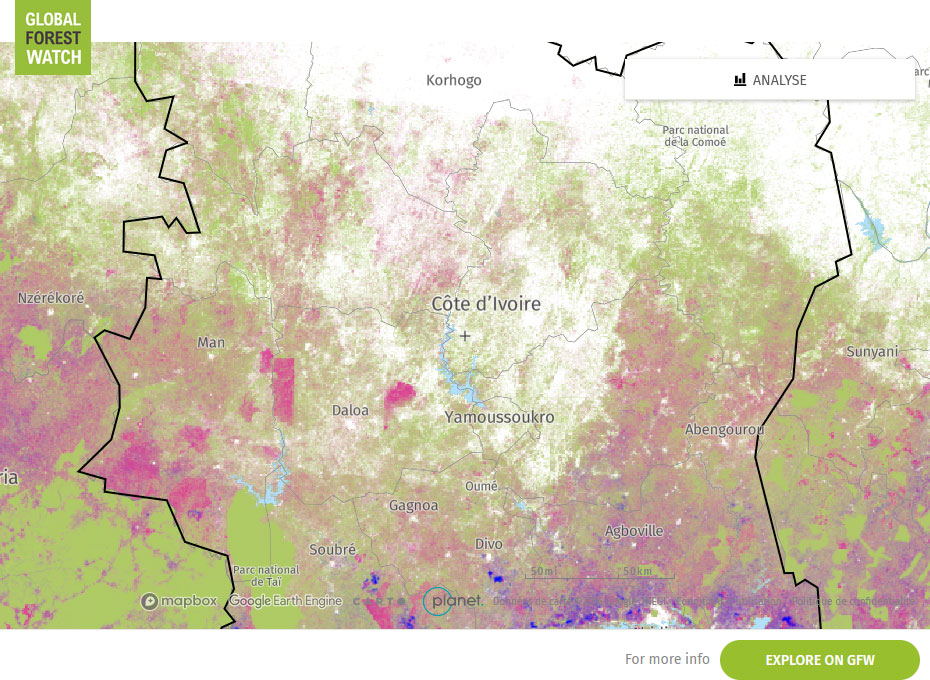Forest resources and context of Republic of Côte d'Ivoire
UPDATING IN PROGRESS
(FLEGT VPA signature - 2022)
Over the past century, Côte d'Ivoire's forest cover has declined from about 16 million hectares to less than three million hectares, with only about 500,000 hectares of primary forest remaining (IFFN, 2021).

Land surface
31.8million ha
Forest cover
2.8million ha
Production forest
0.8million ha
Forest ownership
63.8% publicly
Forest resources in Côte d'ivoire
Types of forest
Three different ecological zones can be distinguished in Côte d’Ivoire:
- In the North the domaine soudanais, which can be characterised as extensive savannah;
- In the centre a transition zone with mainly semi-deciduous forests; and
- In the South humid evergreen forests.
Most of the forests in Côte d'Ivoire are severely damaged or are in the early stages of secondary growth, with the exception of protected forest areas (national parks, nature reserves) and some classified forests.
The results of Côte d'Ivoire's recent National Forest and Wildlife Inventory (IFFN - Inventaire Forestier et Faunique National) indicate a national forest area of 2.97 million ha. This figure consists of:
- 558,030 ha of classified forests managed by the SODEFOR
- 674,500 ha of protected areas managed by the OIPR
- 1,740,300 ha of rural forests managed by the MINEF
Over the past century, forest cover in Côte d'Ivoire has declined from about 16 million hectares to less than three million hectares, with only about 517,000 hectares of primary forest remaining. This deforestation is mainly due to the conversion of the forest to agriculture, some of which is illegal. Nevertheless, the forests still contribute greatly to Côte d'Ivoire's economy, and provide jobs and livelihood to the local populations. Most of the industrial timber production is for the export market. (BNETD 2015).
Côte d’Ivoire's political and administrative capital is Yamoussoukro, although almost all institutions are located in Abidjan, its main economic centre.
Forest ownership in Côte d'ivoire
The ownership of forests is vested in any person who holds a land title, an agreement with the holder of the land title or a customary right (articles 25 and 27 of the Forestry Code). National parks, nature reserves and classified forests are owned by the State.
key figures
| Land surface | 31.8 million hectares |
|---|---|
| Forest cover | 2.8 million hectares (8.8%); mostly other naturally regenerated forest |
| Production forest | 0.8 million hectares designated for production |
| Forest ownership |
63.8% publicly owned |
| Annual change rate | -3.3% per year; over the past 10 years (2010-2020) |
Source: FAO, 2020
See also: Global Forest Ressources Assessment 2020, FAO



